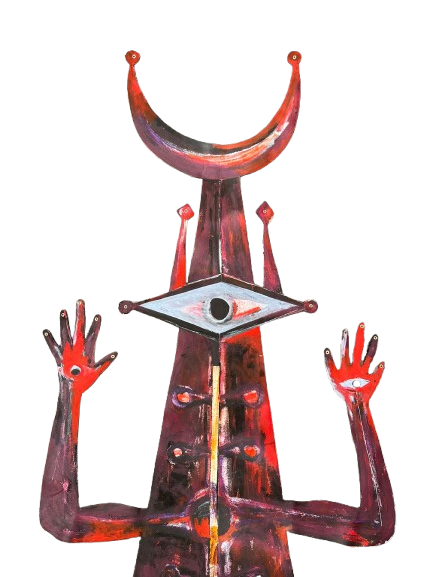Janja-cite The sun saw it all
How do we bear witness to genocide without deepening its scars—and offer truth without leaving new marks on the skin of memory?
In November 2023, the Sudanese town of Ardamata witnessed one of the most brutal massacres of the Darfur conflict. In the span of just a few days, more than a thousand people were killed and thousands more displaced. In the absence of international protection or journalistic access, the atrocities were recorded only in fragments—by survivors, community members, and even perpetrators themselves.
This exhibition merges rigorous research and a commitment to truthseeking with artistic expression. Thus, we seek to commemorate, demand narrative justice, and enable a space for healing. The exhibition takes a point of departure in a visual archive of the Ardamata massacre, consisting of survivor testimonies and community sourced materials including perpetrator recordings, respectively filmed and collected by journalist, scholar, and filmmaker Sara Creta.
In February 2025, six Sudanese artists gathered in Nairobi for an intensive workshop led by curator Khalid Albaih, and Sara Creta and Nina Grønlykke Mollerup of the Views of Violence research project at the University of Copenhagen. Together, they explored unseen digital archives and community-sourced material from Ardamata, interrogating the aesthetics of evidence and the ethics of representation.
The process began with collective exploration of the material—viewing, listening, and reflecting on its weight—before each artist developed a personal theme that resonated with both the evidence and their own artistic language. Without fully knowing each other’s final concepts, the artists worked in parallel, trusting that their visions would later converge.

As curator and artistic director, the aim of Khalid Albaih was to weave these individual works into a single shared space: a group exhibition where each artist’s voice stands alone, yet also forms part of one unified installation. This central work “houses” all the others, becoming a body that carries the stories of many bodies, and a face that holds the many faces—victims and perpetrators—of a genocide.
A towering figure by Khalid Shatta reaches out with many hands, releasing Heema’s echoes of voices and silence; within its body, Sannad Mohamed Shreef cradles fragile nets for lives lost, while Roaa Ismail and Mohamed Ali Abdelaziz Bakr map the named and the missing, and Hozaifa Elsiddig paints 1,000 faces—some seen, others fading into shadow.
The name fuses “Janja”—a reference to the Janjaweed, the militia-turned-government force that has terrorized Darfur since the early 2000s—with “cite,” meaning to name, to reference, to call to account. And, of course, it resonates with the word genocide.
Janja-cite is both an act of remembrance and a call to witness. It is an acknowledgment that these events are not abstract histories, but lived and ongoing realities—stories that demand to be cited, named, and seen.
Invoking the sun as a witness in the title is not only about insisting on remembrance and justice. It is also a caring reminder of the healing powers of the sun. After having watched some of the most harrowing images from the Ardamata Massacre at our workshop, we regained our grounding as we watched a long clip of the sun setting over Ardamata. It was collectively healing.